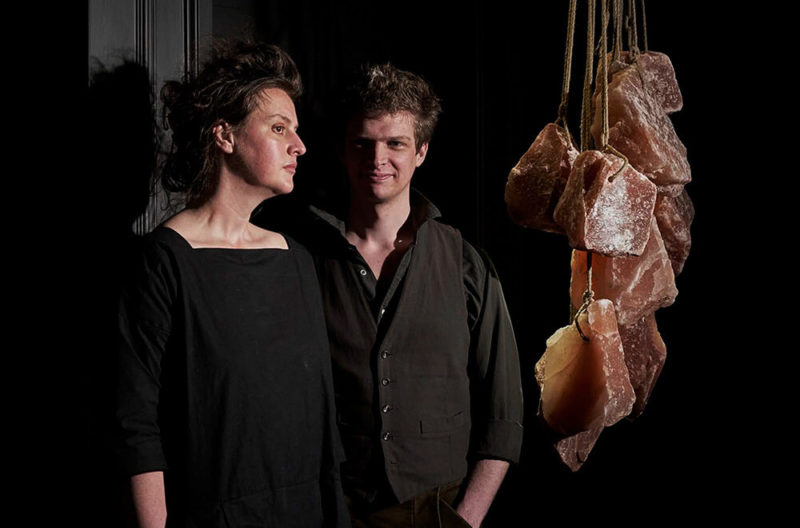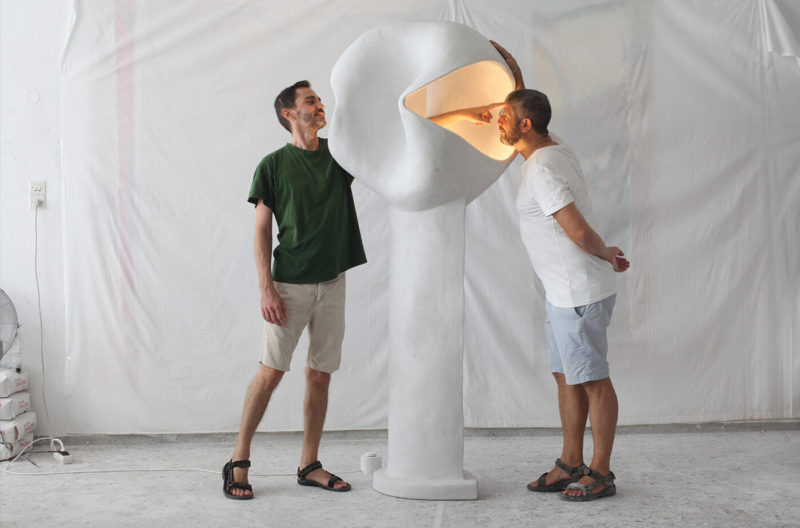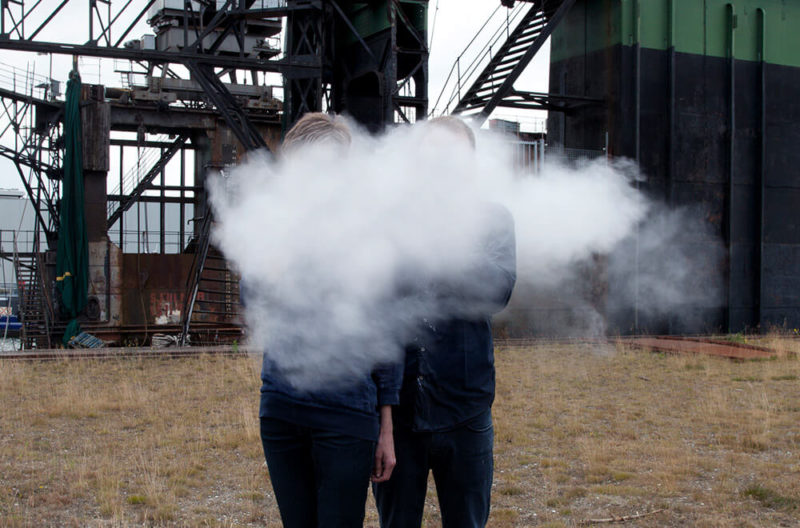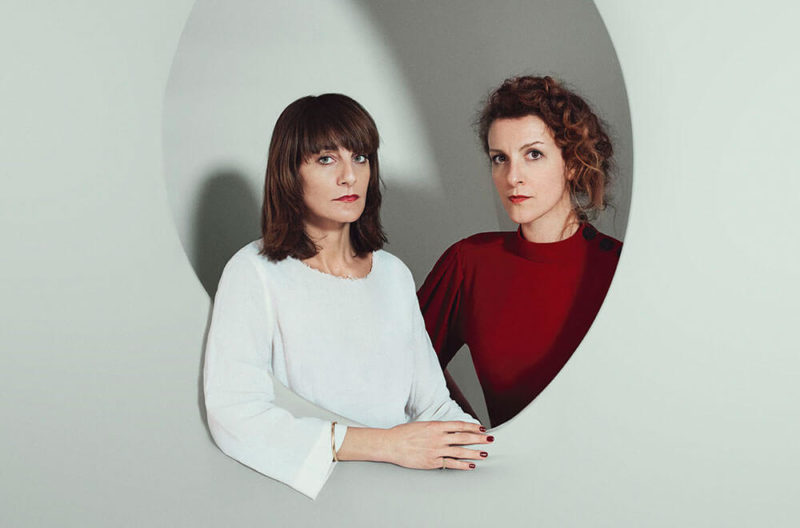Tessa and Tara Sakhi
Embraced and cocooned by Venice and inspired by its heritage of glass, the Lebanese-Polish sisters open their show at Venice Glass Week.
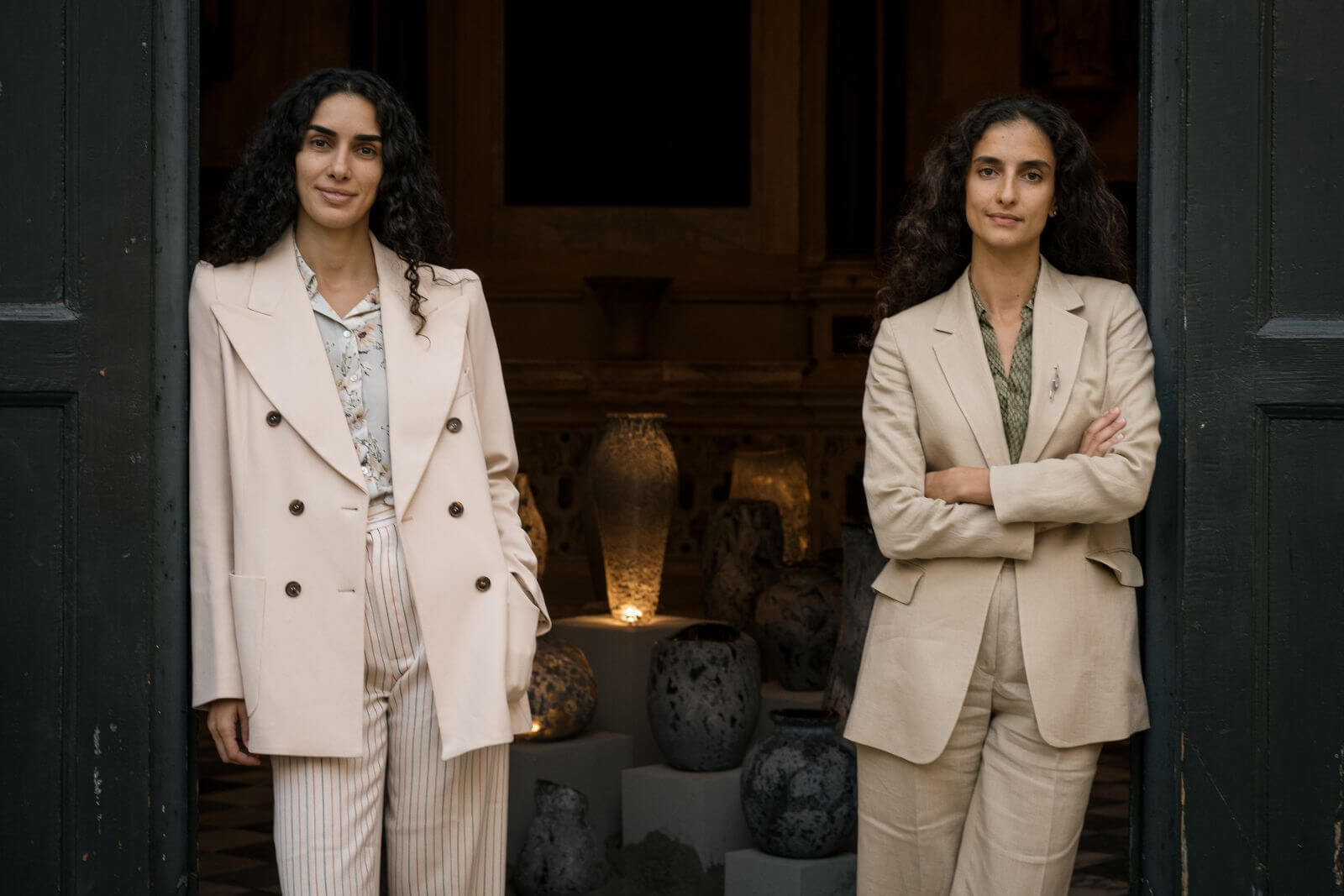
Tessa & Tara Sakhi
COURTESY: T SAKHI / PHOTOGRAPH: Lorenzo Basadonna Scarpa
Tara (33) and Tessa (31) Sakhi are the Lebanese-Polish sisters behind the multidisciplinary design practice T SAKHI. Born in Beirut, they studied architecture in various institutions in Europe and America before setting up a studio between Lebanon and Venice. Their work together has encompassed interior design, installation and public art, furniture making and experiments with glass in collaboration with Murano craftsmen.
This autumn, as part of Venice Glass Week, they are opening an exhibition of new, ambitious glass sculptures (organised in partnership with Cairo-based collectible design gallery Le Lab), while at PAD London Galerie Gosserez will show some of their coffee tables made from recuperated marble waste. On the eve of the opening of their Venice show, The Design Edit interviewed the design duo.
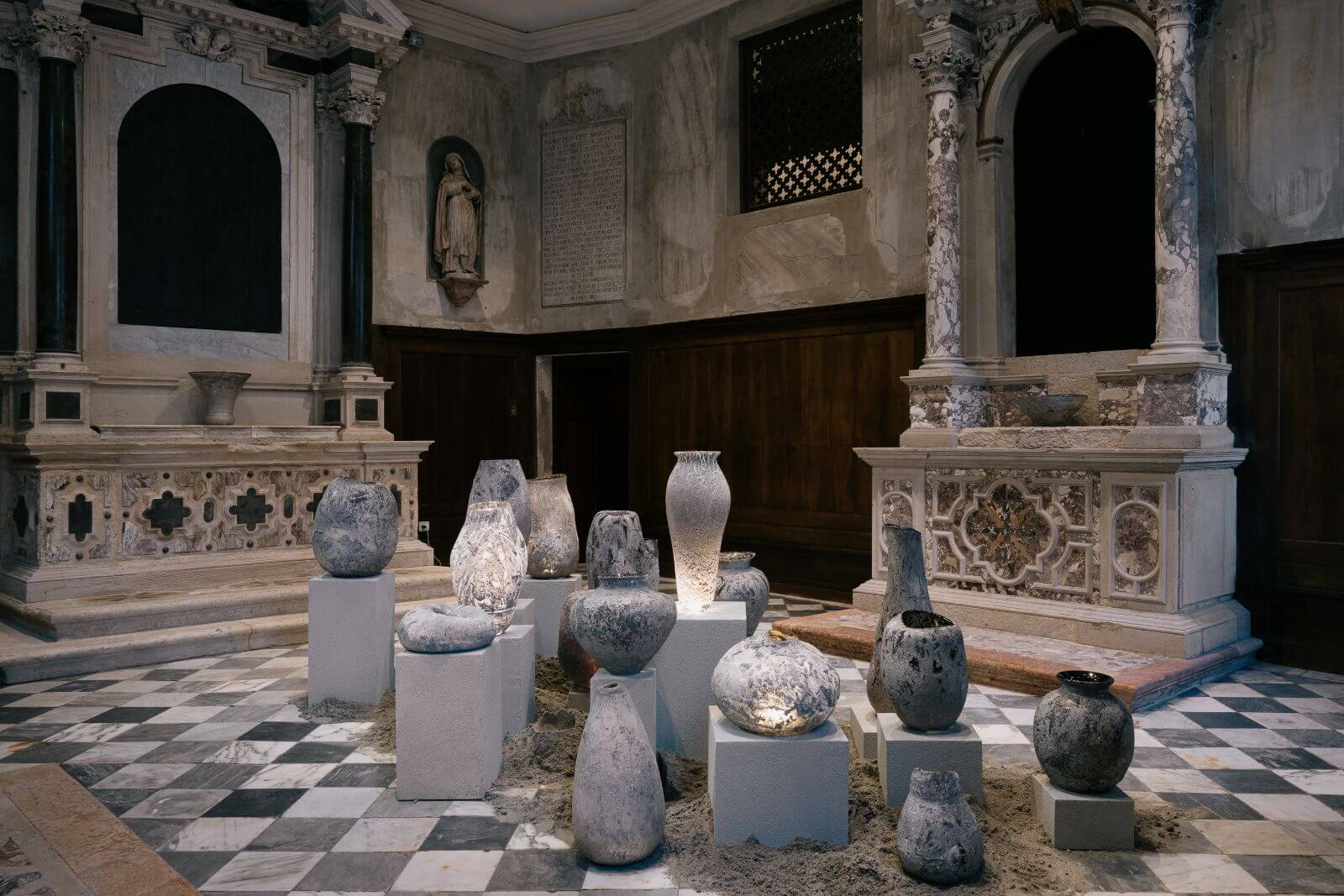
T SAKHI , ‘Jurat’ Murano vessel sculptures, 2022
COURTESY: T SAKHI / PHOTOGRAPH: Lorenzo Basadonna Scarpa
TDE: So this interesting combination of a Polish/Lebanese heritage – how do you think your background influenced you?
Tara: Our father is from the mountains in Lebanon and we have the Polish side from our mother, who is from Warsaw. We were born in Beirut. During our childhood and teenage years we lived in Beirut and then later on I went to university in Paris and New York, while Tessa lived in Milan. I also lived in Berlin. We have moved around a lot and always felt like we belonged in different cultures, and not entirely in one. All this makes us think about the sense of home, belonging and identity. When we’re in Beirut we’re considered to be Europeans, and then when we’re in Europe we’re considered to be Arabs. I think it gives us an interesting perspective on the world. The studio that my sister and I have established, here in Venice, feels like a safe, creative space inside this world, where we feel like we’re in between a million places. We try to create, in our work, a sense of belonging.
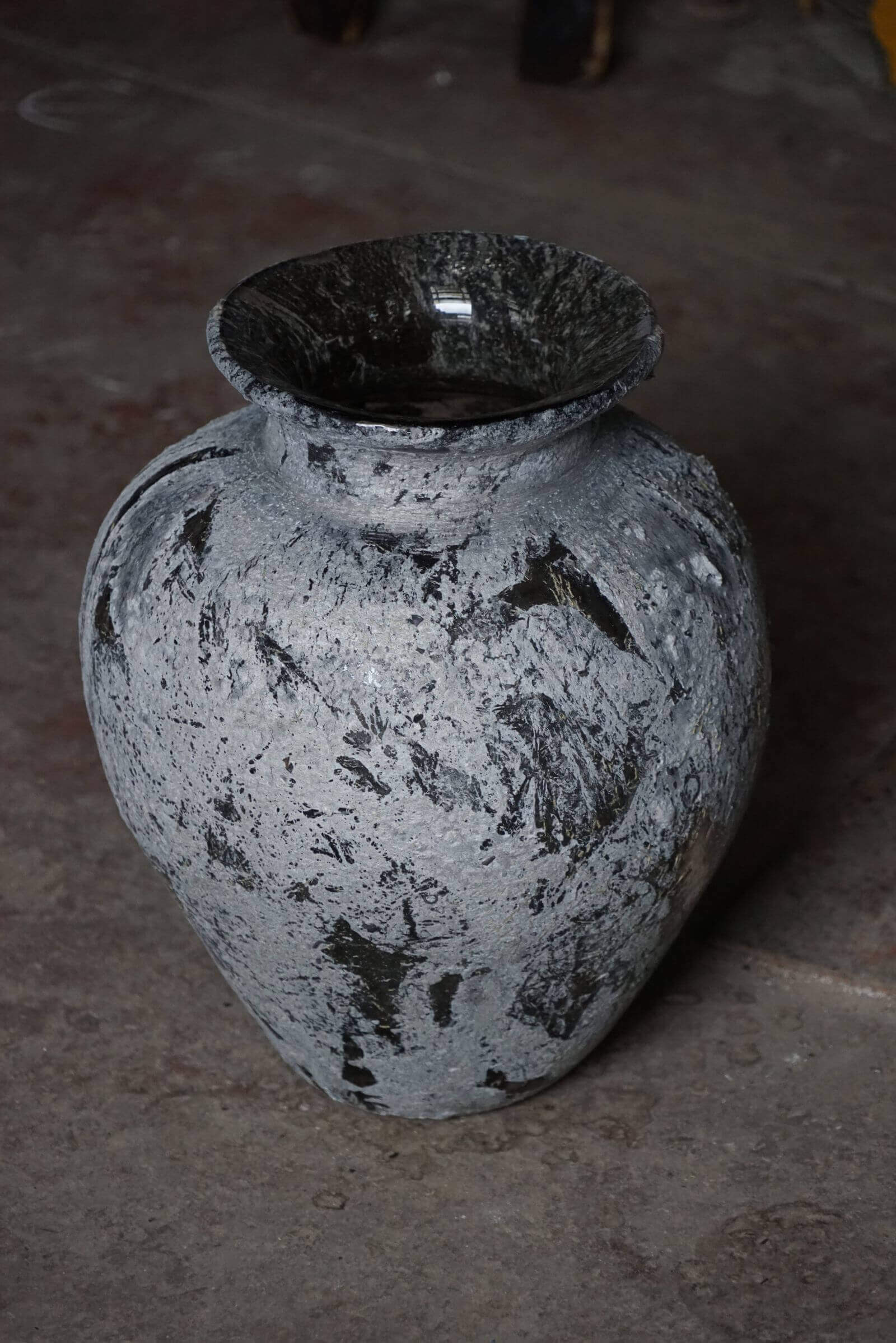
‘Jurat’ by T SAKHI in production in Murano, 2022
COURTESY: T SAKHI
TDE: When did you start to work together?
Tessa: When we were still at university. Tara and I overlapped for a year at the L’académie Libanaise des Beaux Arts in Beirut and we were working on our university projects together. Then one day we were offered an interiors project. Back then, in 2015, Tara was also living in New York and we decided to work on the project together. It was very organic.
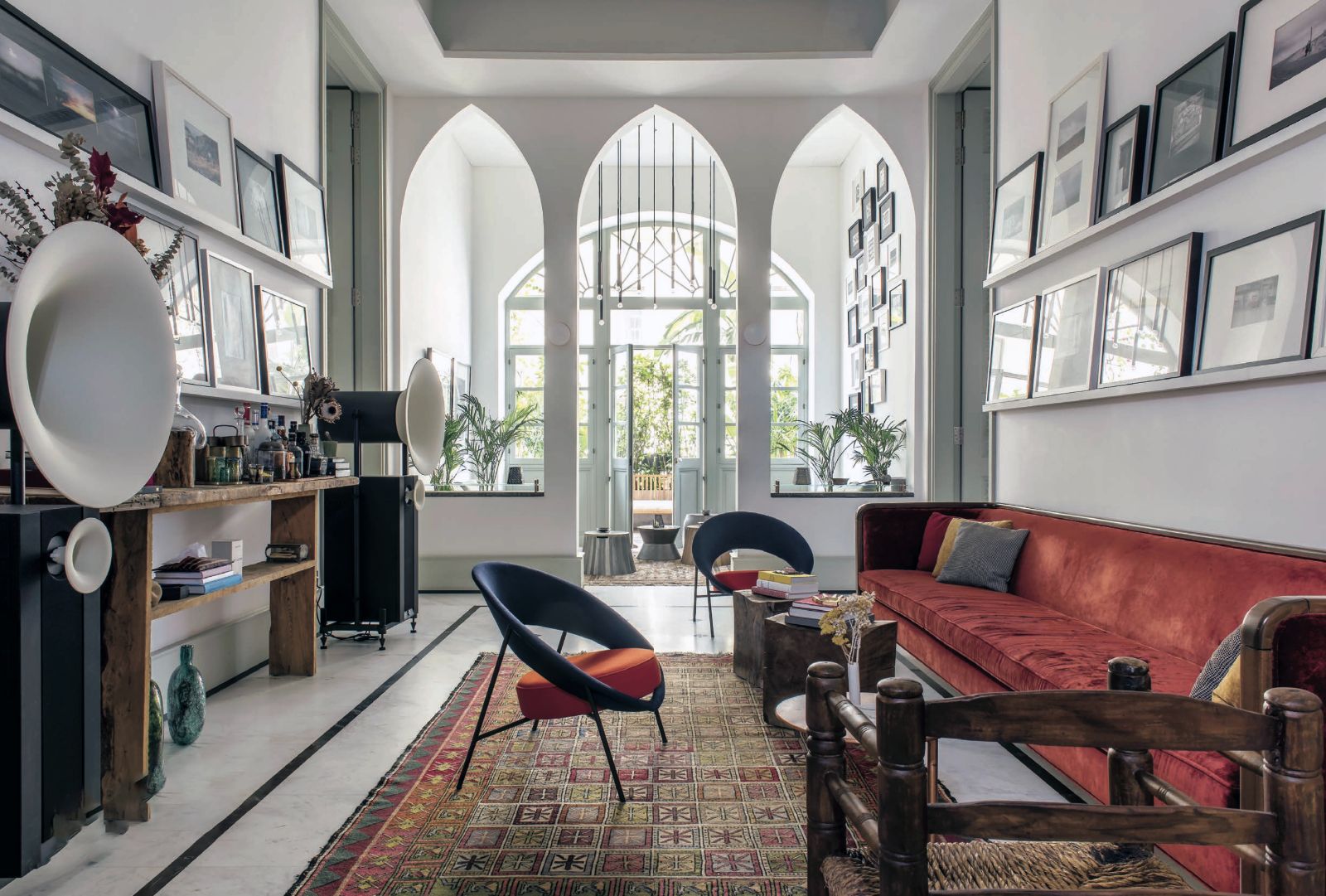
T SAKHI, ‘WADI’ house
COURTESY: T SAKHI / PHOTOGRAPH: Guillaume
Tara: Someone visited our house in Beirut, which we had decorated together, and suggested that we should design her house. We didn’t see it as a career, but then slowly, slowly everything came into place and we started having more of a vision of what we were doing together. So for us, honestly, it has been a beautiful chapter and interesting challenge in our lives. It’s more about our sisterhood and creating together, rather than creating a company.
TDE: What was the house that you decorated together?
Tessa: It was an old Lebanese house and we did a lot of renovation work inside. It was challenging but fun because this is exactly what we want to do – we want to preserve the Lebanese heritage, while adapting it to suit our modern lifestyle.
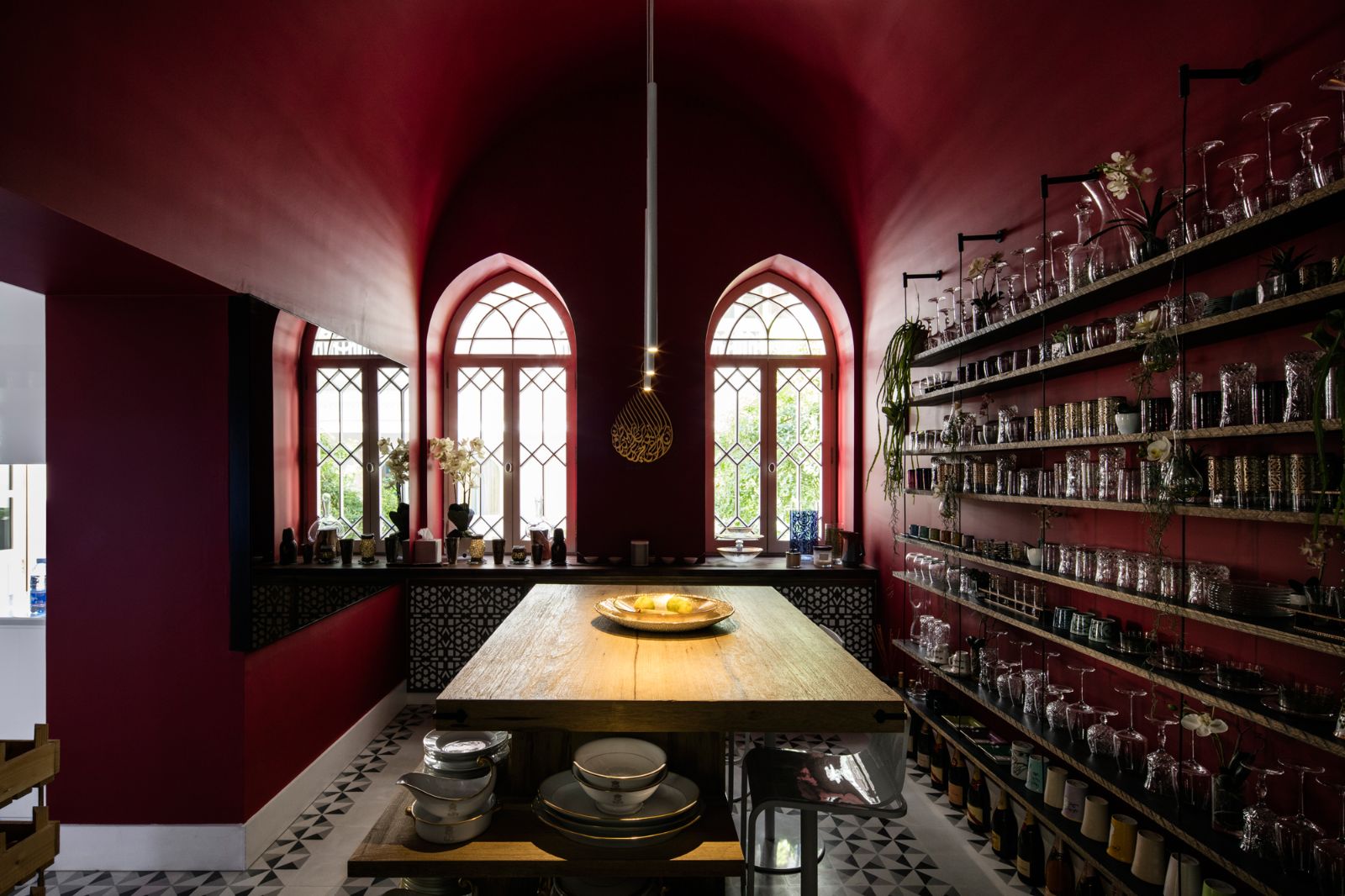
T SAKHI, ‘WADI’ house
COURTESY: T SAKHI / PHOTOGRAPH: Ieva Saudargaite
Tara: What’s interesting about the typology of typical Lebanese houses is that it’s all focused around convivial and shared moments in a space. We felt it was so interesting to design a space according to the function, or the feeling.
TDE: When did you start to work in glass as a material?
Tessa: In 2017, we were commissioned to do a project for an exhibition in Lebanon and visited some glass factories in Venice and Murano. We really loved the process of glass making. This is when we started to collaborate with Laguna-B. We’ve been doing that for five years, or more.
Tara: At first we had to learn about glass. It’s so complex, it’s so delicate, it goes through different stages … Glass making leads you to become so intrigued with the material itself that you then feel inspired to add your own creative input. I think that is the ambition in Murano, especially with Venice Glass Week: how to give an additional layer of thought, or artistry, to glass.
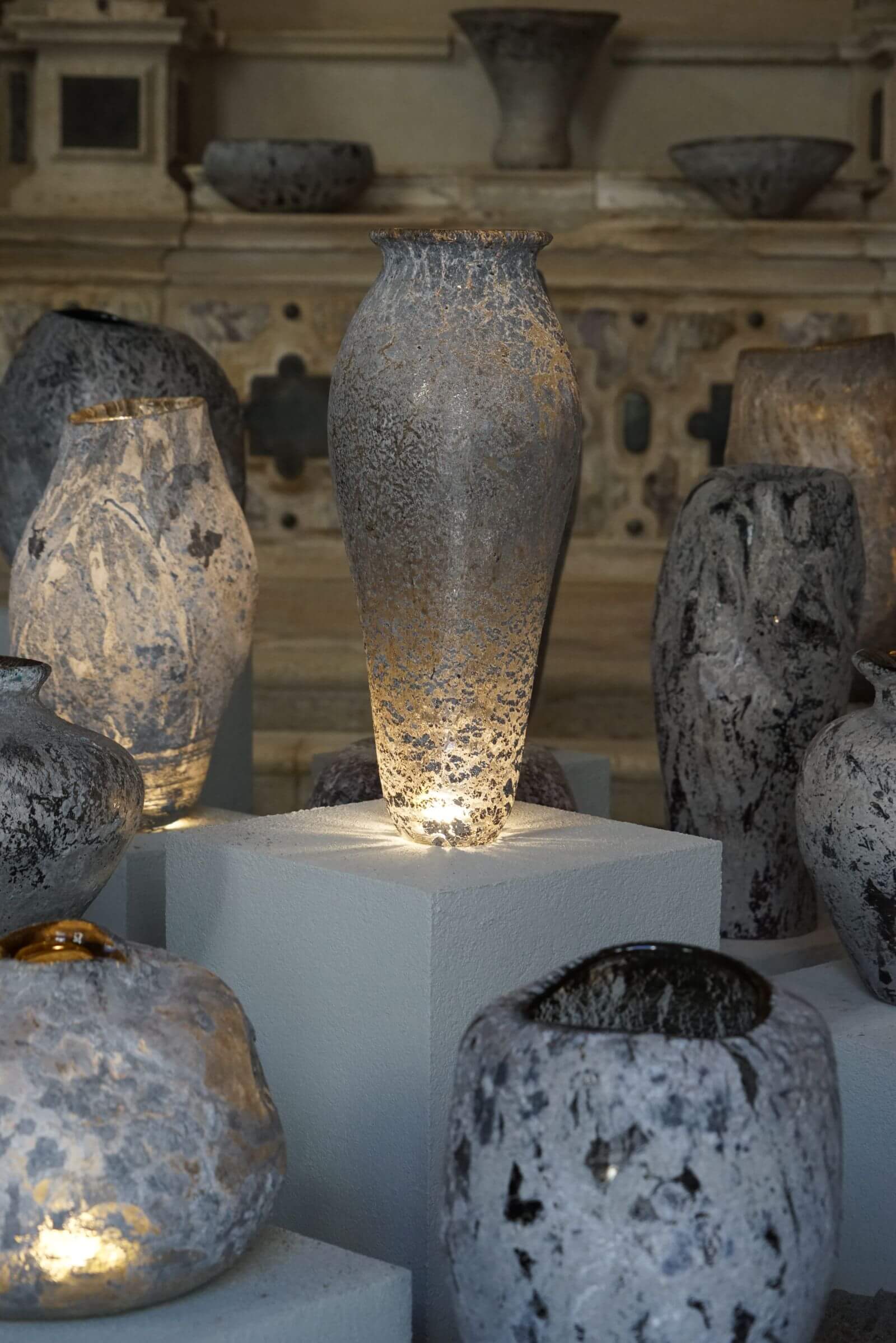
T SAKHI , ‘Jurat’ Murano vessel sculptures, 2022
COURTESY: T SAKHI / PHOTOGRAPH: Lorenzo Basadonna Scarpa
Tessa: We had a lot of difficulties with the glass blowers, because first of all we were quite young when we started … and also we were not Venetian. And coming with new ideas and new concepts of working with the glass – they really did not like it. So it was very tough and very challenging, but we persisted.
Tara: They’ve developed these techniques for generations and generations – the glass blower we met was 48 and he’s part of a long heritage … so they’re clinging onto the techniques they have. But we slowly noticed that the more we went to them, the more they got used to us, the more we could convince them to try certain things out of curiosity and then they were excited. So it was fun and incredibly experimental and that’s precisely what we wanted to achieve.
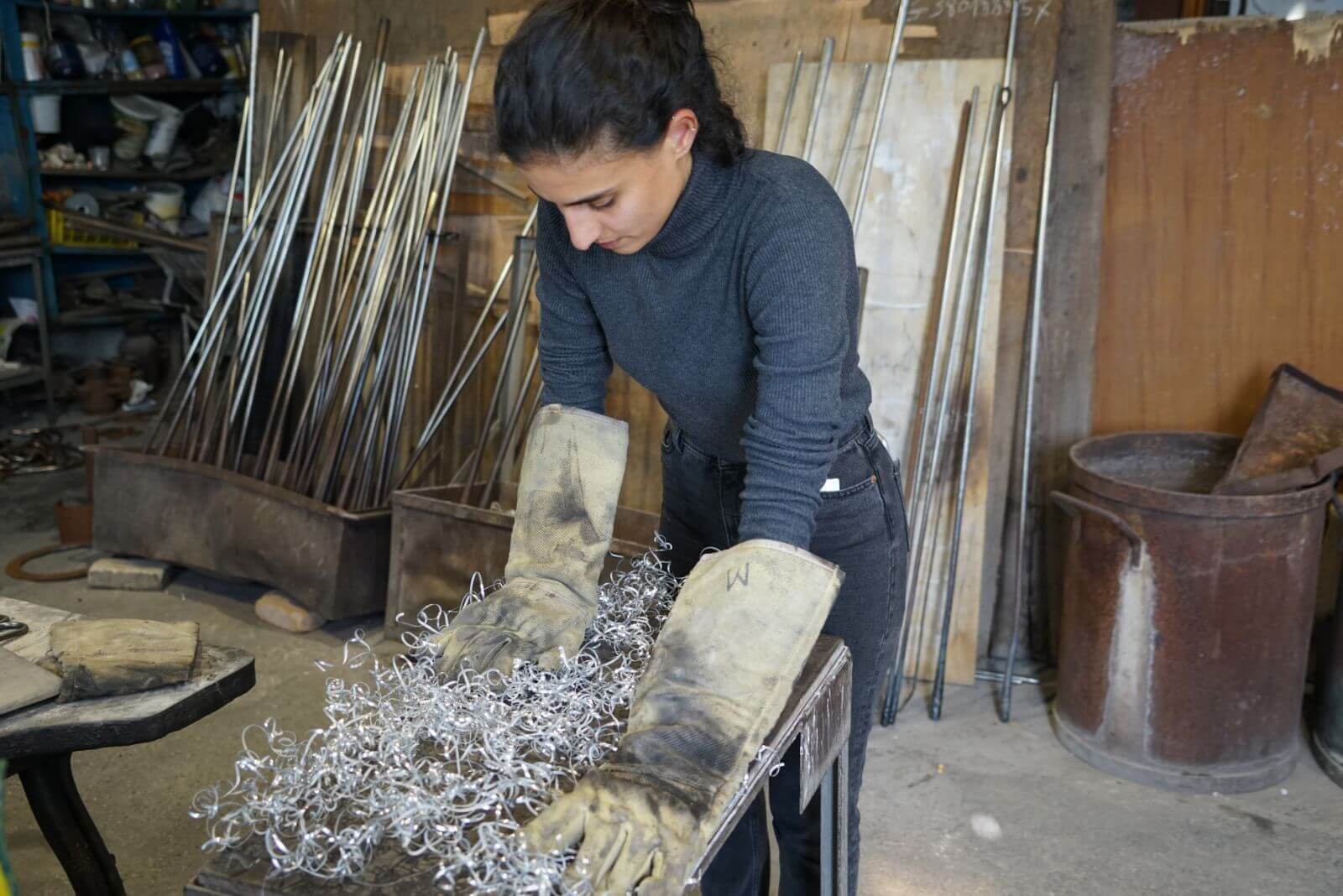
‘Jurat’ by T SAKHI in production in Murano, 2022
COURTESY: T SAKHI
TDE: The work you made initially in glass, how has that evolved?
Tessa: The first technique we worked with was combining glass with metal. There are metal factories close to the glass factories and the metal factories have to pay to get rid of their waste, so we started collecting the waste and whatever else we could find. We tried a lot of different methods and not everything worked, because the different materials had different heating and cooling processes. So when we were mixing the glass with copper, the copper would cool off much more quickly than the glass, and it would expand within the glass and the piece would explode. So there was a lot of experimentation. The very first project involved taking very thin metal threads, which were like hair (offcuts of shredding metal plates) and we started introducing them within the glass, to produce our first Murano collection of alcohol flasks, ‘Nomads’, and also a tableware collection, ‘Tasting Threads’. The reflections we were getting were very interesting. The shapes created inside the glass were very free and organic, but then when you touched the glass it would still be quintessential Murano.
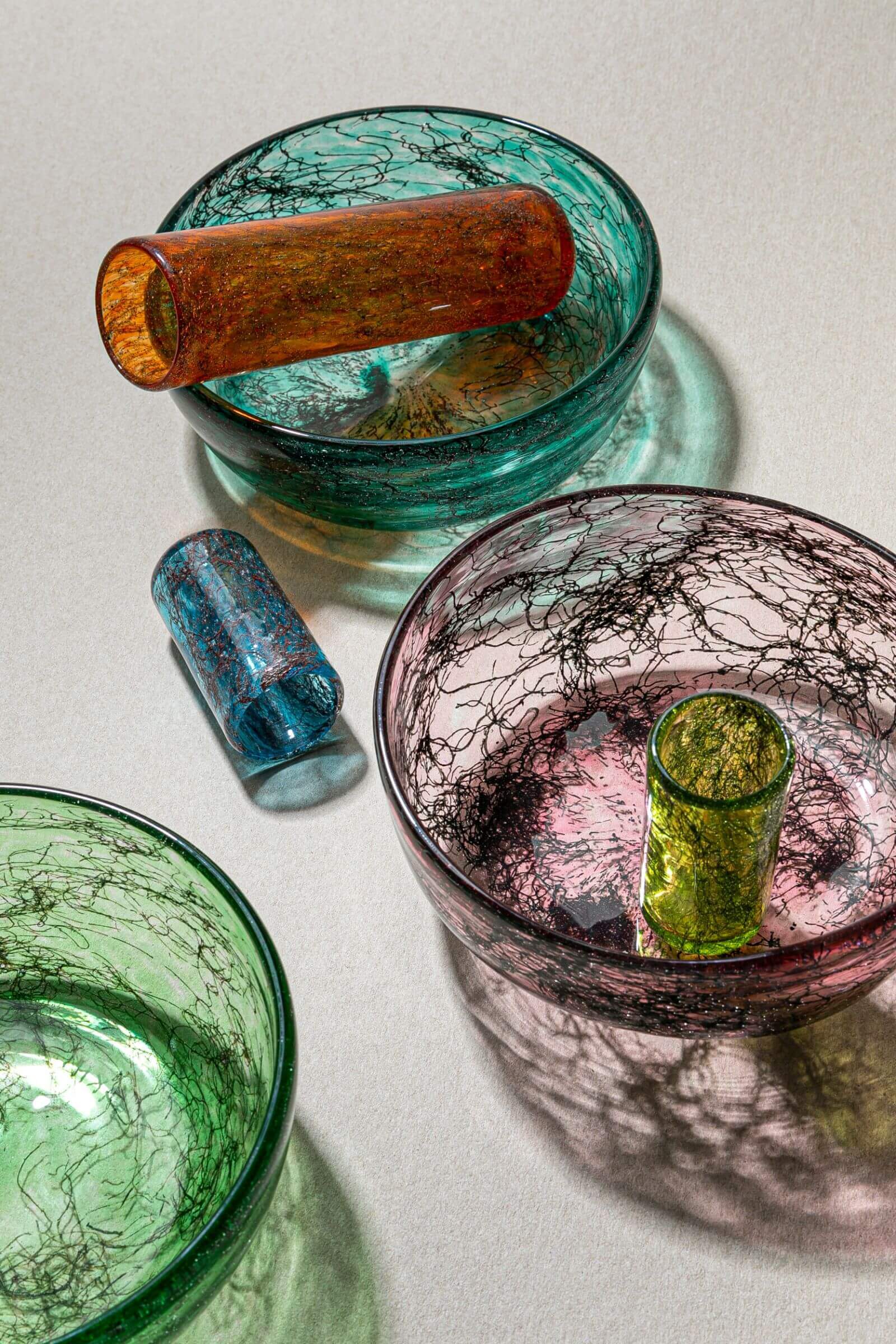
T SAKHI, ‘Tasting Threads’, Murano tableware, 2020
COURTESY: T SAKHI / PHOTOGRAPH: Romaine Bassenne
Then we started creating different types of small objects, before starting to work with other metals, in larger quantities, like aluminium and brass powder. This is basically the exhibition we’ve been working on for Venice Glass Week.
We started with small samples, trying to understand the texture … these vessels have a texture like eroded stone. Then we started putting light inside them. Tara and I are always questioning the materiality.
Tara: We like the fact that the work creates the illusion of another material. It may excite the curiosity of someone who, knowing that they are coming to see a glass exhibition, yet sees that the material looks like stone, or like an extra-terrestrial formation. We hope they will be intrigued by it and touch it and feel it – we’re very much for touching things!
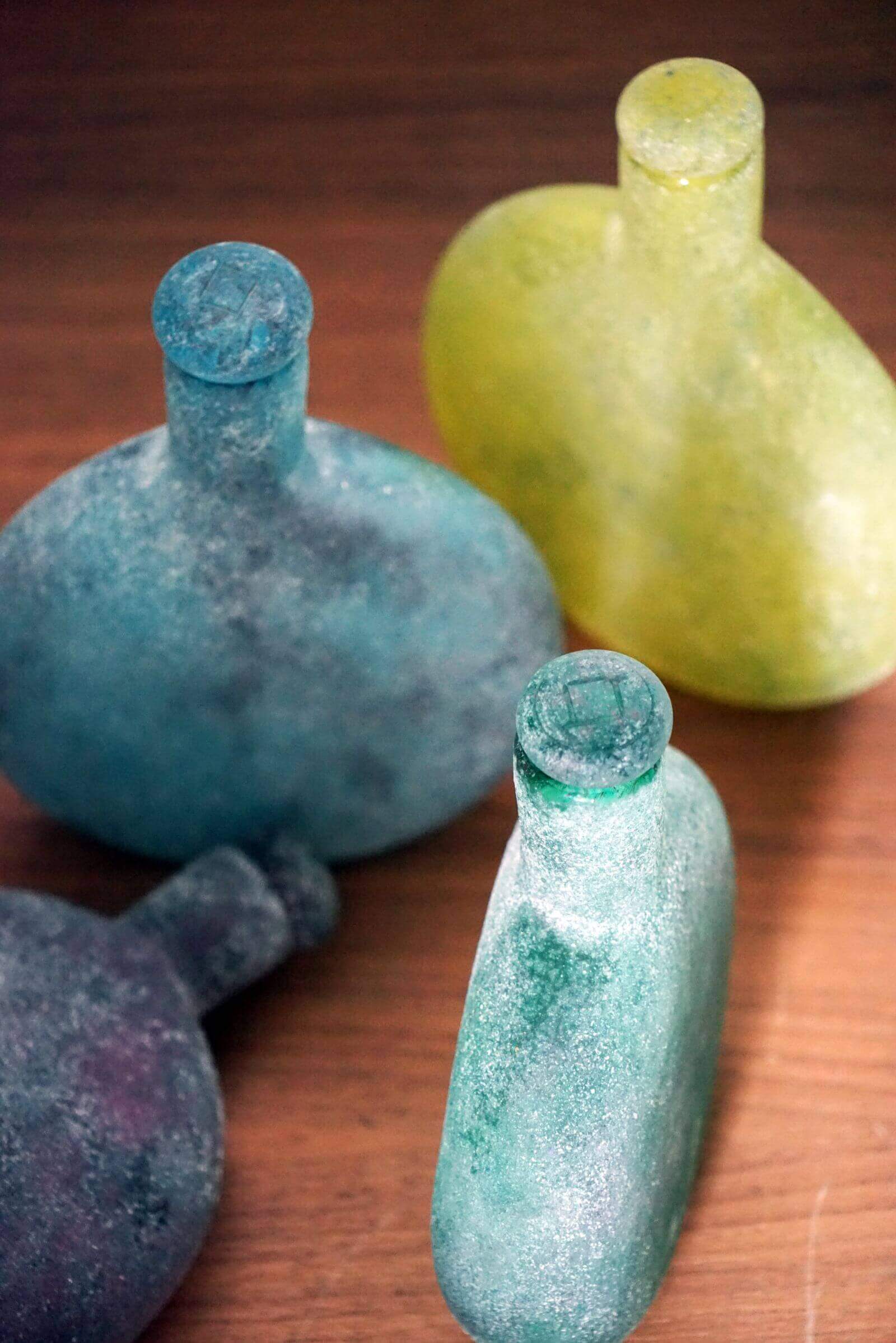
T SAKHI, ‘Nomads’ Murano flasks, 2020
COURTESY: T SAKHI / PHOTOGRAPH: Tessa Sakhi
TDE: How do you work together as a creative partnership? Do you divide the tasks, or do both of you do everything?
Tara: We both do everything actually. We love bouncing back and forth. If I start the project, I will then present it back to Tessa. Because we think it’s very important to know how to articulate the ideas.
Tessa: Basically, when we have a brief from a client, initially we discuss it together so we’re aligned on the concept. What’s nice about Tara and I is that we do complement each other. We’re very different but we always come up with the same ideas. Differently. And this is what makes it interesting, because we have always felt that what I lack, she completes, and what she lacks, I complement.
Tara: I think what is beautiful is the trust between us. And we’re very truthful to each other, we’re raw and real. That’s what counts for in a project.
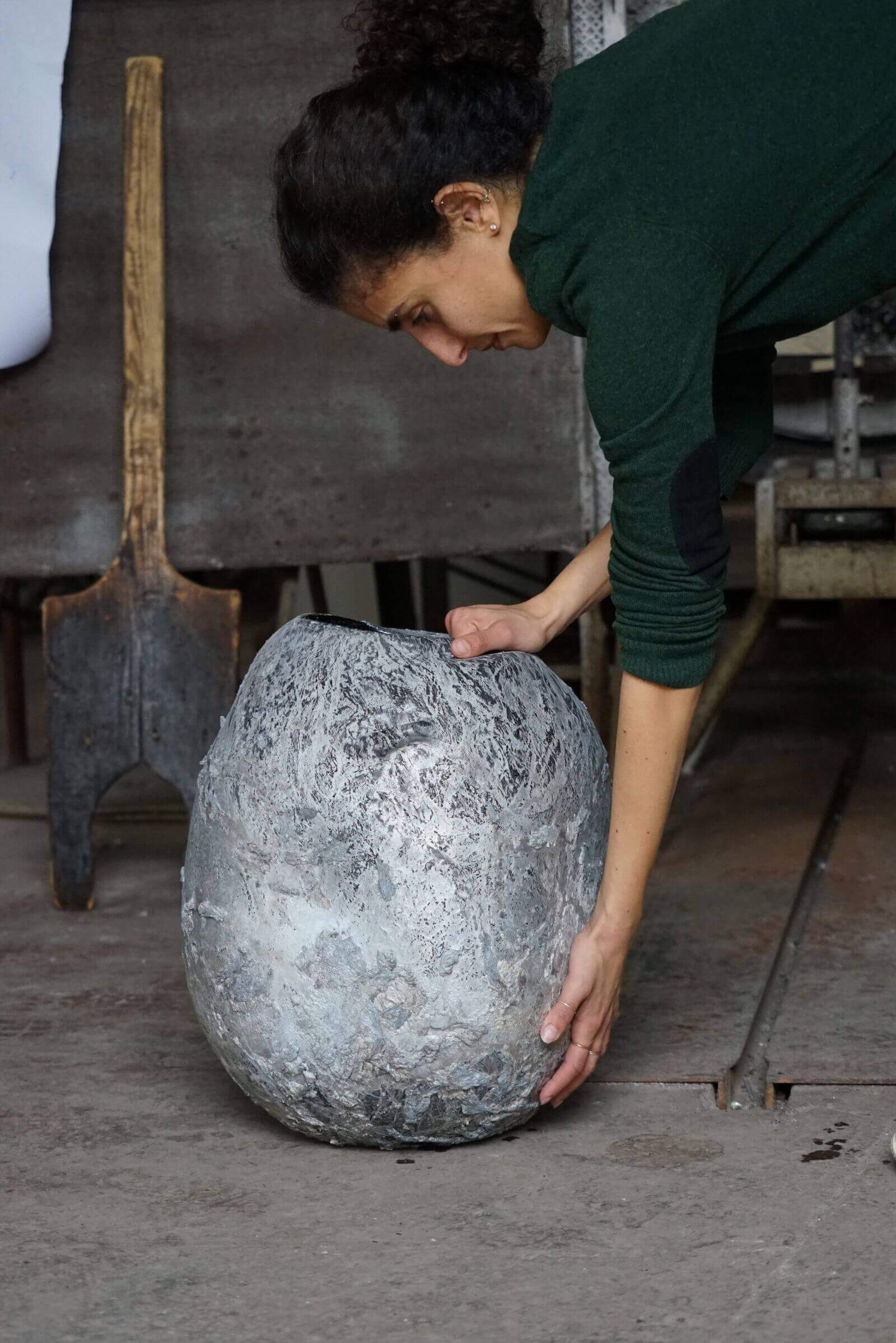
T SAKHI , ‘Jurat’ vessel, 2022
COURTESY: T SAKHI
TDE: Tessa, you said “what she lacks, I complement”. I wonder where you feel your individual strengths lie?
Tessa: I always thought of myself as a bit more structured and functional, as opposed to Tara who is a bit more design and artistically oriented. So I’m always about “You know we have to make this project feasible”, it’s about numbers and budget.
TDE: You are currently based in Venice, Is that because most of your work with glass is based there, and it’s become your overriding interest?
Tara: For the moment, yes, but also we went through a lot of changes over the past two years. We were based in Beirut, but because of all the economic instability and the explosion, we had to relocate. So Tessa and I both started thinking about where we would go. We had this project we were developing in Venice and we’d always wanted to live there, so we found it was a first stepping stone and we fell in love with it. We felt cocooned, as if the city welcomed us.
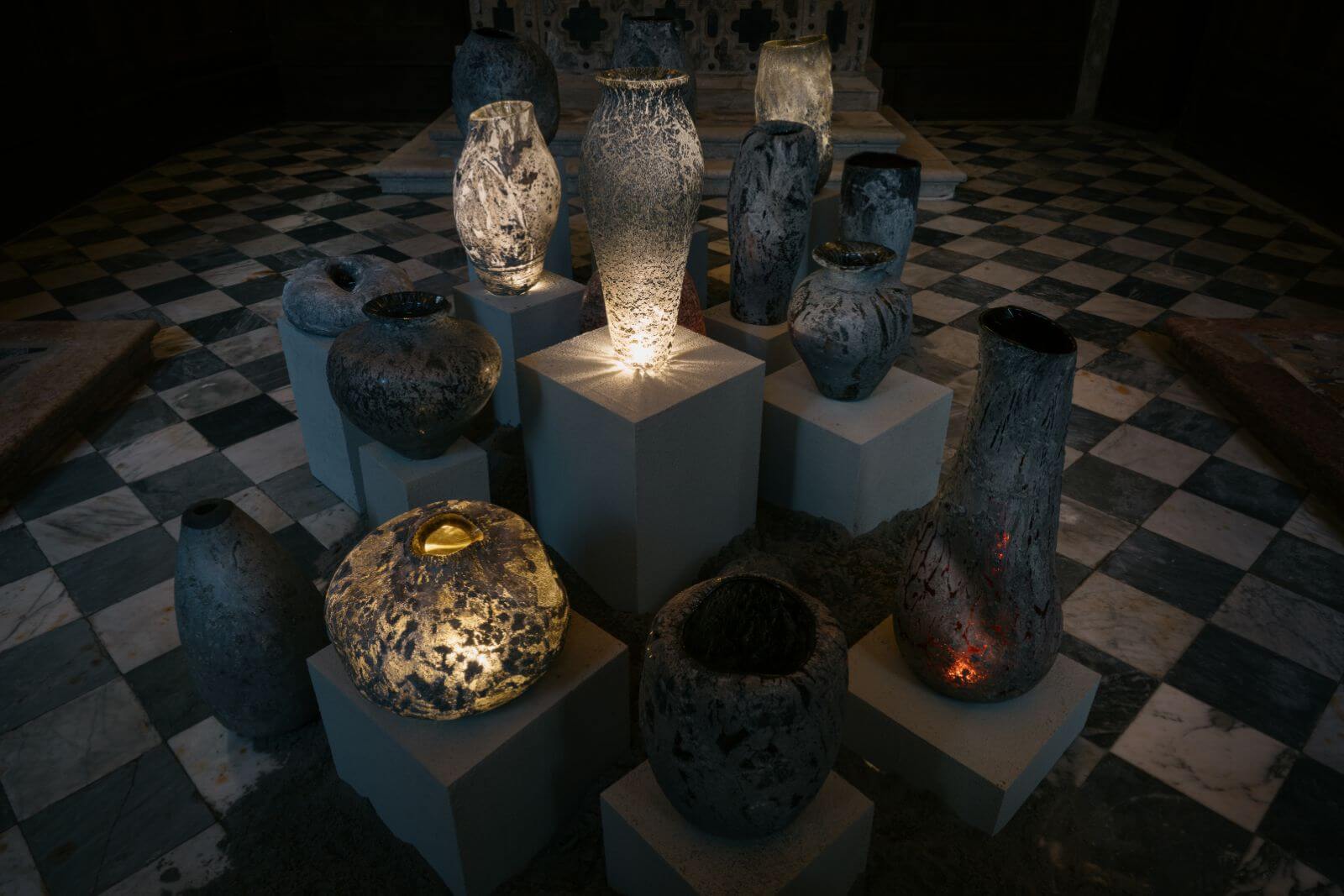
T SAKHI , ‘Jurat’ Murano vessel sculptures, 2022
COURTESY: T SAKHI / PHOTOGRAPH: Lorenzo Basadonna Scarpa
Tessa: For me, Venice resembles Lebanon a lot, even architecturally-speaking, there is Byzantine and Ottoman inspiration. And the layout and the typology of Lebanese architecture that Tara was speaking about earlier – it’s very similar to Venice. And then there is something about the light of Venice. The reflection of the lagoon, but also the sky, the hues of purple and violet. It’s really inspiring.
TDE: Currently, what projects have you got underway besides from this glass project?
Tara: Our ongoing project is producing a coffee table collection called ‘Reconciled Fragments’ for Galerie Gosserez in Paris. It’s taking waste marble from marble factories in Lebanon and then creating a mould, and placing all these fragments in that mould with brass powder and colouring resin and so forth. And pouring it and creating a tabletop. We’re interested in working with waste but trying to adapt it with different materials and craftsmanship in different countries. That’s how we learn a lot. In Lebanon they’re really good with metalwork, with marbles.
Tessa: Working with Lebanese craftsmen is very important for us. As we no longer live in the country, we want to maintain this connection with Lebanon and encourage and support craftspeople, because they are really talented and they are suffering a lot now.
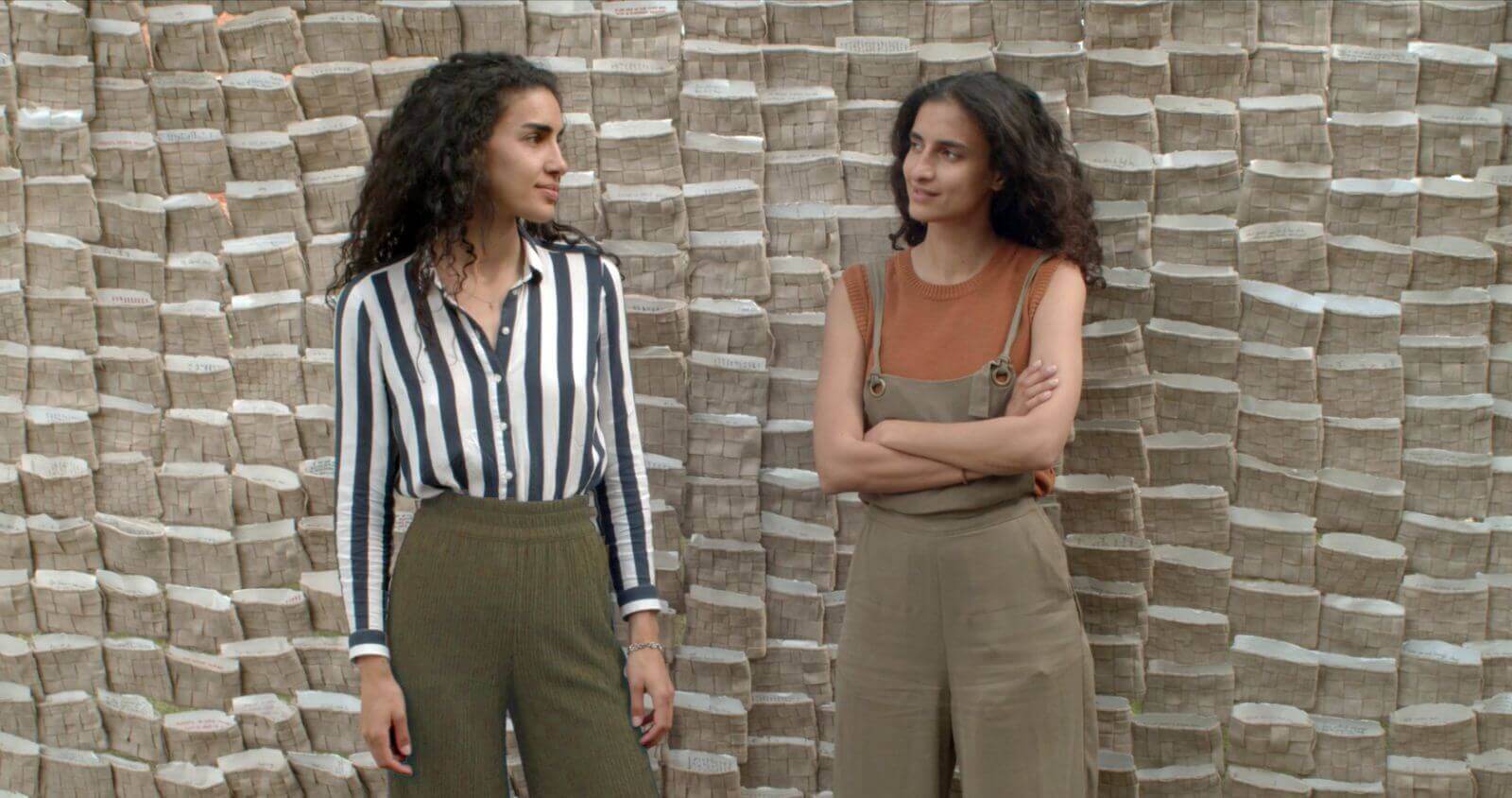
Tessa & Tara Sakhi
COURTESY: T SAKHI / PHOTOGRAPH: Clemente Ciarrocca
‘I HEAR YOU TREMBLE, Murano Sculptures Exhibition’ by T SAKHI at Chiesa San Gallo, Venice, Italy. Organised in partnership with Le Lab.
September 17th-October 14th, 2022




